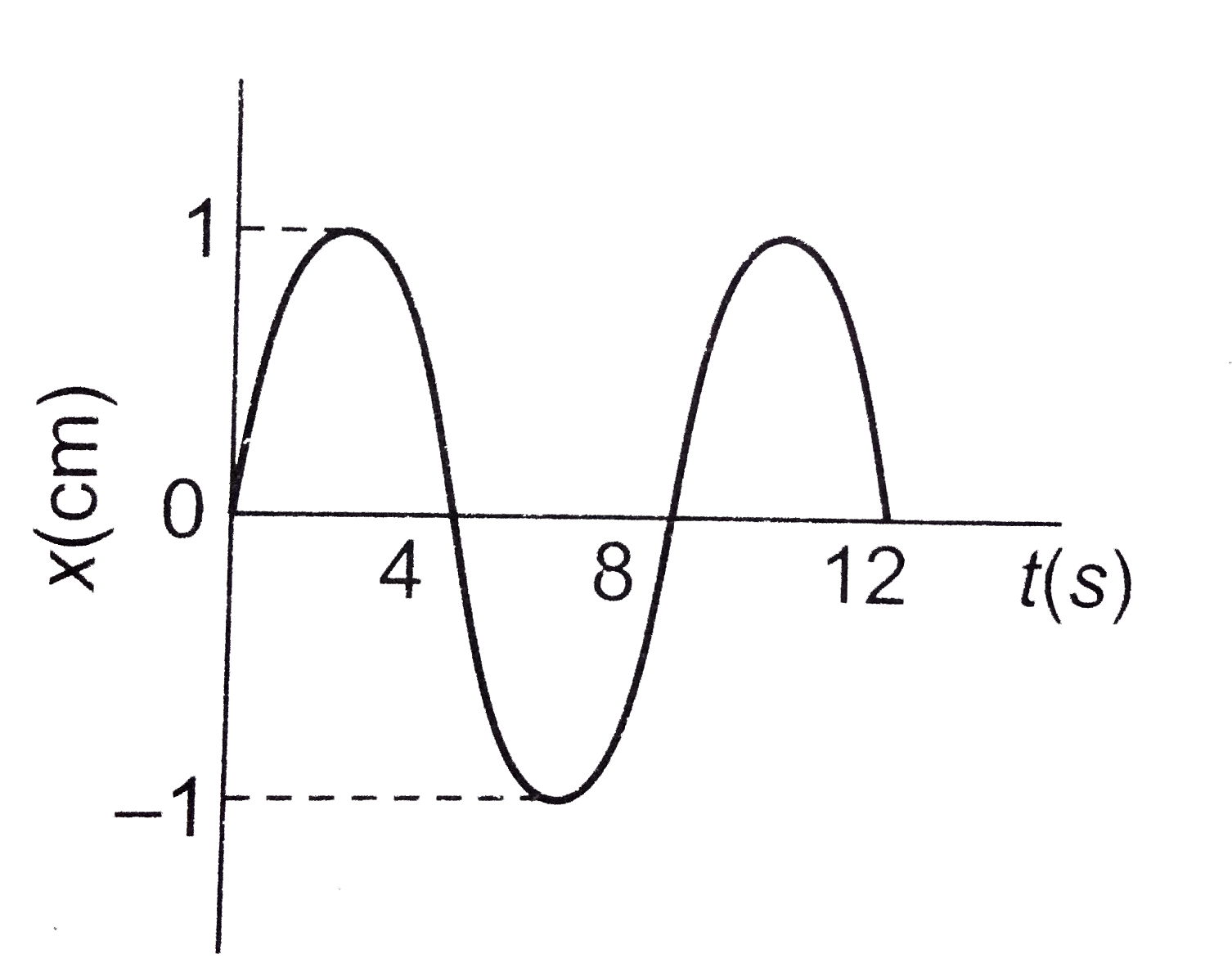A particle undergoing simle harmonic motion has time dependent displacement given by x(t)=Asin(πt)90.The ratio of kinetic to potential energy of this partle at t= 210s will be :
19
1
2
3
To solve the problem of finding the ratio of kinetic energy (KE) to potential energy (PE) of a particle undergoing simple harmonic motion (SHM) at a given time, we will follow these steps:
Step 1: Identify the given parameters
The displacement of the particle is given by:
x(t)=Asin(πt90)
where A is the amplitude.
Step 2: Calculate the angular frequency ω
From the displacement equation, we can identify:
ω=π90
Step 3: Calculate the displacement at t=210s
Substituting t=210s into the displacement equation:
x(210)=Asin(π⋅21090)
Calculating the argument:
π⋅21090=210π90=7π3
Now, using the periodic property of sine:
sin(7π3)=sin(2π+π3)=sin(π3)=√32
Thus, the displacement becomes:
x(210)=A⋅√32
Step 4: Calculate the potential energy (PE)
The potential energy in SHM is given by:
PE=12kx2
Using x=A⋅√32:
PE=12k(A⋅√32)2=12k⋅3A24=3kA28
Step 5: Calculate the velocity v(t)
The velocity in SHM is given by:
v(t)=dxdt=Aωcos(ωt)
Substituting ω=π90 and t=210s:
v(210)=A⋅π90cos(7π3)
Using cos(7π3)=cos(2π+π3)=cos(π3)=12:
v(210)=A⋅π90⋅12=Aπ180
Step 6: Calculate the kinetic energy (KE)
The kinetic energy is given by:
KE=12mv2
Substituting the expression for v:
KE=12m(Aπ180)2=12m⋅A2π232400=mA2π264800
Step 7: Find the ratio of KE to PE
Now we can find the ratio:
KEPE=mA2π2648003kA28
This simplifies to:
KEPE=mπ2⋅864800⋅3k=8mπ2194400k
Step 8: Substitute k in terms of m and ω
Using the relation k=mω2:
KEPE=8mπ2194400m(π90)2
This simplifies to:
KEPE=8⋅902194400=8⋅8100194400=64800194400=13
Final Answer
The ratio of kinetic energy to potential energy at t=210s is:
KEPE=13
The displacement of the particle is given by:
x(t)=Asin(πt90)
where A is the amplitude.
From the displacement equation, we can identify:
ω=π90
Substituting t=210s into the displacement equation:
x(210)=Asin(π⋅21090)
Calculating the argument:
π⋅21090=210π90=7π3
Now, using the periodic property of sine:
sin(7π3)=sin(2π+π3)=sin(π3)=√32
Thus, the displacement becomes:
x(210)=A⋅√32
The potential energy in SHM is given by:
PE=12kx2
Using x=A⋅√32:
PE=12k(A⋅√32)2=12k⋅3A24=3kA28
The velocity in SHM is given by:
v(t)=dxdt=Aωcos(ωt)
Substituting ω=π90 and t=210s:
v(210)=A⋅π90cos(7π3)
Using cos(7π3)=cos(2π+π3)=cos(π3)=12:
v(210)=A⋅π90⋅12=Aπ180
The kinetic energy is given by:
KE=12mv2
Substituting the expression for v:
KE=12m(Aπ180)2=12m⋅A2π232400=mA2π264800
Now we can find the ratio:
KEPE=mA2π2648003kA28
This simplifies to:
KEPE=mπ2⋅864800⋅3k=8mπ2194400k
Using the relation k=mω2:
KEPE=8mπ2194400m(π90)2
This simplifies to:
KEPE=8⋅902194400=8⋅8100194400=64800194400=13
The ratio of kinetic energy to potential energy at t=210s is:
KEPE=13
Topper's Solved these Questions
Similar Questions
A particle undergoes simple harmonic motion having time period T. The time taken in 3/8th oscillation is
View SolutionFor a particle executing simple harmonic motion, the displacement x is given by x=Acosωt. Identify the graph, which represents the variation of potential energy (U) as a function of time t and displacement x.

View Solution
Knowledge Check
A particle undergoes simple harmonic motion having time period T. The time taken in 3/8th oscillation is
A38TB58TC512TD712TA particle executes simple harmonic motion according to the displacement equation y=10cos(2πt+π6)cm where t is in second The velocity of the particle at t=16 second will be
A−6.28ms−1B−0.628ms−1C0.628ms−1D6.28ms−1A particle starts oscillating simple harmonically from its equilibrium position then, the ration of kinetic energy and potential energy of the particle at the time T/12 is: (T=time period)
A2:1B3:1C4:1D1:4
When the displacement of a particle executing simple harmonic motion is half its amplitude, the ratio of its kinetic energy to potential energy is
View SolutionA particle is executing linear simple harmonic motion of amplitude A. At what displacement is the energy of the particle half potential and half kinetic?
View SolutionThe particle executing simple harmonic motion has a kinetic energy K0cos2ωt. The maximum values of the potential energy and the energy are respectively
View SolutionA particle performing simple harmonic motion undergoes unitial displacement of A2 (where A is the amplitude of simple harmonic motion) in 1 s. At t=0, the particle may be at he extreme position or mean position the time period of the simple harmonic motion can be
View SolutionThe x-t graph of a particle undergoing simple harmonic motion is shown below. The acceleration of the particle of t=4/3s is

View Solution